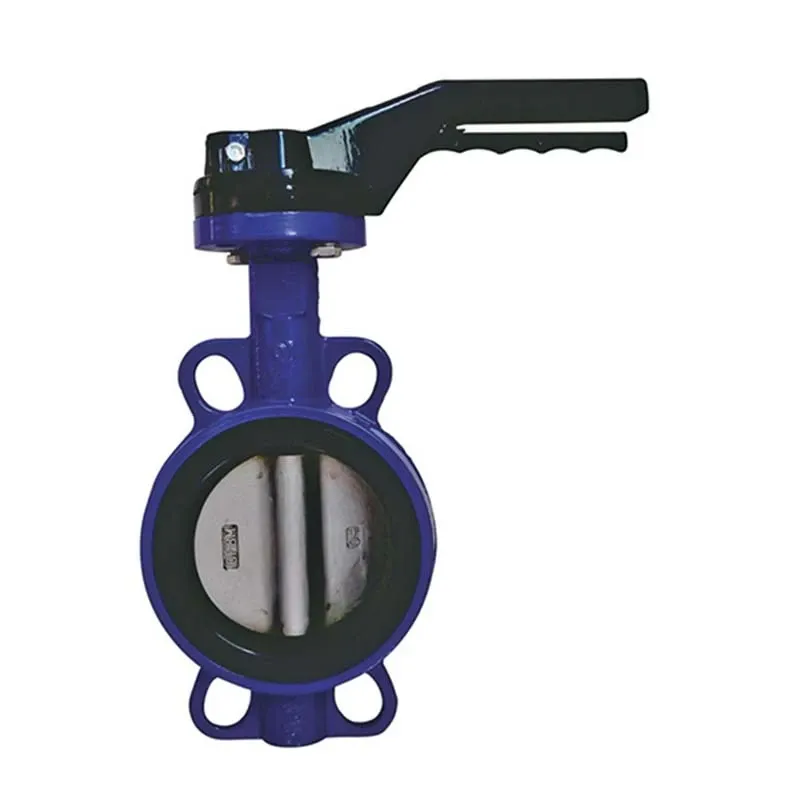Dec . 03, 2024 17:17 Back to list
electric actuated butterfly valve
Electric Actuated Butterfly Valve Revolutionizing Flow Control
In modern industrial applications, the control of fluid flow is critical for efficiency and safety. One of the pivotal components used in such systems is the butterfly valve. Among the various types available, electric actuated butterfly valves have emerged as a leading choice due to their precision, reliability, and ease of operation. This article explores the fundamental concepts, benefits, applications, and future trends associated with electric actuated butterfly valves.
Understanding Butterfly Valves
Butterfly valves are a type of quarter-turn valve that uses a circular disc, mounted on a rotating shaft, to regulate flow. The valve is fully open when the disc is parallel to the flow stream, allowing maximum flow, and fully closed when the disc is perpendicular, stopping the flow entirely. Their compact design and simple mechanism make them ideal for various applications, from water supply systems to gas distribution networks.
Electric Actuation Explained
The integration of electric actuators with butterfly valves adds a layer of sophistication and control that manual or pneumatic actuators cannot offer. Electric actuators convert electrical energy into mechanical motion, which is then transmitted to the valve. This enables operators to control the valve remotely, allowing for quick and precise adjustments without the need for manual intervention.
Benefits of Electric Actuated Butterfly Valves
1. Precision Control Electric actuators provide accurate positioning, allowing for fine-tuned control of flow rates. This is particularly beneficial in processes where precise flow measurements are crucial, such as chemical processing and water treatment.
2. Remote Operation With electric actuated butterfly valves, operators can manage flow control systems from a distance. This reduces the need for personnel to be on-site, enhancing safety and efficiency, especially in hazardous environments.
3. Reduced Maintenance Electric actuators generally require less maintenance compared to pneumatic systems, which need regular checks for air leaks and pressure levels. The simplicity of electric systems often translates to lower long-term costs.
4. Energy Efficiency Electric actuators consume less power during operation compared to pneumatic systems that need constant air supply. This not only reduces operational costs but also contributes to sustainable practices in industries.
5. Integration with Automation Systems Electric actuated butterfly valves can be easily integrated into automated control systems, enhancing process control and data collection. They can be programmed to adjust flow based on real-time data, improving operational efficiency.
electric actuated butterfly valve

Applications
Electric actuated butterfly valves are versatile and find applications across various sectors
- Water and Wastewater Treatment These valves are often used to regulate the flow of water and wastewater in treatment plants, where precise control is necessary for effective treatment processes.
- Chemical Processing In chemical industries, electric actuated butterfly valves are crucial for handling corrosive fluids, providing closed-loop control, and ensuring safety.
- HVAC Systems In heating, ventilation, and air conditioning systems, these valves help control airflow and temperature, contributing to energy efficiency in buildings.
- Food and Beverage Industry Maintaining hygiene standards is vital in this industry, and electric actuated butterfly valves are commonly used for their reliability and clean operation.
- Oil and Gas These valves facilitate the control of flow in pipelines, ensuring safe and efficient transport of hydrocarbons.
Future Trends
As technology continues to evolve, so do the capabilities of electric actuated butterfly valves. Innovations in smart technology are paving the way for more advanced control systems, incorporating features like IoT connectivity for real-time monitoring and predictive maintenance. This could lead to even greater efficiency and reliability in fluid control applications.
Additionally, as industries continue to focus on sustainability, electric actuated butterfly valves will likely play a pivotal role in reducing energy consumption and promoting eco-friendly practices. The ongoing development in materials and control technologies will enhance their durability and performance, making them an indispensable component of modern fluid control systems.
Conclusion
Electric actuated butterfly valves represent a significant advancement in flow control technology. Their combination of precision, reliability, and ease of use makes them an essential choice for a wide range of applications. As industries grow increasingly complex and demanding, the adoption of these innovative valves will help drive efficiency, safety, and sustainability in fluid management systems. The future looks bright for electric actuated butterfly valves as they continue to evolve and adapt to meet the needs of modern industry.
Share
-
Reliable Wafer Type Butterfly Valves for Every IndustryNewsJul.25,2025
-
Reliable Flow Control Begins with the Right Ball Check ValveNewsJul.25,2025
-
Precision Flow Control Starts with Quality ValvesNewsJul.25,2025
-
Industrial Flow Control ReliabilityNewsJul.25,2025
-
Engineered for Efficiency Gate Valves That Power Industrial PerformanceNewsJul.25,2025
-
Empowering Infrastructure Through Quality ManufacturingNewsJul.25,2025